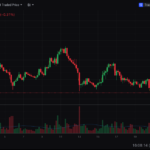Pair trading is a market-neutral trading strategy designed to capitalize on the relative price movements between two correlated assets. By simultaneously buying one asset and selling another, traders aim to profit from the divergence and convergence of their prices, regardless of overall market conditions. Let’s explore what makes pair trading an exciting and resilient strategy for both beginner and seasoned traders.
How Pair Trading Works
The basic premise of pair trading lies in identifying two assets that share a historical correlation, such as stocks in the same industry, commodities, or ETFs. Traders then track their price movements to spot deviations from their usual relationship.
For example, let’s consider two airline stocks, Stock A and Stock B:
- Historically, Stock A and Stock B move in tandem due to similar market influences (fuel costs, travel demand, etc.).
- If Stock A suddenly outperforms Stock B without a clear reason, a trader might short Stock A and go long on Stock B, betting that their prices will revert to their historical relationship.
This strategy doesn’t rely on predicting overall market direction, making it particularly attractive during volatile or uncertain market periods.
Key Elements of Pair Trading
- Correlation Analysis
The first step is identifying pairs with a high correlation. Tools like correlation coefficients or cointegration tests help assess whether two assets typically move together. - Spread Measurement
The price difference (spread) between the two assets is monitored. A significant deviation from the mean spread signals a potential trading opportunity. - Market Neutrality
By going long and short simultaneously, traders hedge against market-wide risks, such as economic shocks or geopolitical events. - Entry and Exit Rules
- Entry: Open positions when the spread deviates significantly from the mean.
- Exit: Close positions once the spread reverts to the mean or when predefined risk levels are hit.
Advantages of Pair Trading
- Market Neutrality: Profits can be achieved in bullish, bearish, or sideways markets.
- Reduced Systematic Risk: Since you’re betting on the relative performance of two assets, broader market movements have less impact.
- Diversification: Pair trading works across various asset classes, including equities, commodities, and currencies.
Potential Risks
- Correlation Breakdown: Historical correlations don’t guarantee future performance. External factors may disrupt the relationship between the two assets.
- Execution Costs: Managing two positions doubles the trading fees and potential slippage.
- Overfitting Models: Relying on backtested data without accounting for real-world anomalies can lead to flawed strategies.
Practical Example: Pair Trading in Action
Imagine trading Coca-Cola (KO) and PepsiCo (PEP), two highly correlated stocks in the beverage industry. Historically, their price spread hovers around $5. If Coca-Cola surges, widening the spread to $10, you could:
- Go short on Coca-Cola (expecting its price to drop)
- Go long on PepsiCo (expecting its price to rise)
When the spread narrows back to its historical average, you close both positions, locking in a profit.
Who Should Use Pair Trading?
Pair trading is ideal for:
- Quantitative Traders: Those comfortable with statistical tools and algorithms to identify opportunities.
- Risk-Averse Investors: Those seeking hedged strategies to minimize market exposure.
- Traders in Sideways Markets: This strategy thrives when overall market movements are stagnant.
A Final Thought: Patience Pays
Pair trading is not a get-rich-quick scheme but rather a disciplined approach that requires robust analysis, regular monitoring, and a strong grasp of risk management. When executed well, it offers a reliable way to generate steady returns with controlled risk.
Disclaimer: This article is for informational purposes only and does not constitute financial or investment advice. Always conduct your own research or consult a financial advisor before







